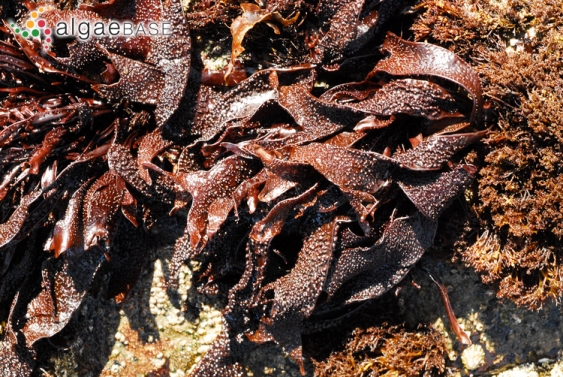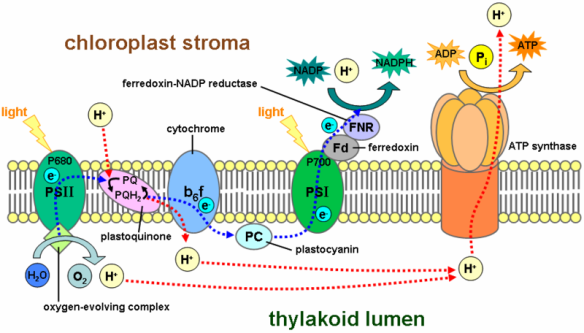
Nutrition
Mastocarpus papillatus is an autotroph that acquires its energy through photosynthesis. It is through the chlorophyll in the chloroplasts that Mastocarpus papillatus absorbs light. There are several kinds of chlorophyll, the most important being chlorophyll "a". This is the molecule which makes photosynthesis possible. It passes its energized electrons on to molecules which will manufacture sugars. All species of red algae contain Chlorophyll “a”. Red algae also has pigment that can be classified as a caretenoid, called phycoerithrin. This pigment ends up masking the chlorophylls to give the red algae their brownish red color. Phycoerithrin helps Mastocarpus papillatus capture blue light waves and reflect red light waves. Because blue light penetrates water to a greater depth than light of longer wavelengths, these pigments allow red algae to photosynthesize and live at somewhat greater depths than most other algae. The process of photosynthesis takes absorbed light energy and carbon dioxide, chlorophyll causes the reaction to occur which makes ATP and NADPH. During this reaction water molecules get split, releasing oxygen into the air. This is an important benefit to animals.
The overall chemical equation for photosynthesis is:

The process of photosynthesis occurs as shows in this diagram:
Some of my classmates have also written about photosynthetic organisms. You can check them out to learn more about the process of photosynthesis. A few of the other organisms written about that undergo photosynthesis are; Spirogyra Longata is a Green Algae, Cyanidium caldarium is another Red Algae, Anabaena is a Blue-Green Algae, Fucus vesiculosus is a brown algae, and Ginkgo biloba is a very interesting commonly found tree.
Time to learn about Sex!
Click here to go back to the Home Page.

